How do you guys keep from building up scar tissue? Or what do you do if you already have scar tissue? Are there ways to break it up? Having been on HRT for 17 years I've built up a good deal of scar tissue, and I seem to remember that deep tissue massage can break up some scar tissue. I remember a few years ago when I went through security at the LA airport, their scanner machine alerted on me because it showed that I have areas of denser tissue in numerous places. It literally shut down the particular scanning area until a TSA officer had done a physical pat down to make sure I wasn't hiding anything.
Install the app
How to install the app on iOS
Follow along with the video below to see how to install our site as a web app on your home screen.
Note: This feature may not be available in some browsers.
You are using an out of date browser. It may not display this or other websites correctly.
You should upgrade or use an alternative browser.
You should upgrade or use an alternative browser.
Getting rid of scar tissue
cloudstrife1218
MuscleChemistry Registered Member
You can't get rid of scar tissue. I'm sorry broski. Once star tissue develops, there is no getting rid of it.
drtbear1967
Musclechemistry Board Certified Member
Deep tissue can help, but it is just part of the deal.
drtbear1967
Musclechemistry Board Certified Member
Here is an article that I found regarding one man dealing with scar tissue.
Breaking Up With Scar Tissue: One Lifter’s Experience With A.R.T. By Jim Vaglica
Last updated: May 29, 2013 <meta content="2013-05-29" itemprop="dateModified"> <meta content="2013-03-05" itemprop="datePublished">
If you’ve ever adjusted your program around painful body parts, you’re definitely in the majority. Officer Jim Vaglica had tried it all, but backup finally arrived in the form of Active Release Technique.
<meta content="Bodybuilding.com" itemprop="name"> <meta content="1-866-236-8417" itemprop="telephone"> <meta content="http://www.bodybuilding.com" itemprop="url"> <meta content="http://www.bodybuilding.com/images/icons/bbcom-b-logo-648.png" itemprop="url"> <meta content="648" itemprop="width"> <meta content="648" itemprop="height"> <meta content="http://www.bodybuilding.com/images/icons/bbcom-b-logo-324.png" itemprop="contentUrl"> <meta content="324" itemprop="width"> <meta content="324" itemprop="height">
<meta content="5777 N. Meeker Ave." itemprop="streetAddress"> <meta content="Boise" itemprop="addressLocality"> <meta content="Idaho" itemprop="addressRegion"> <meta content="83713" itemprop="postalCode"> <meta content="USA" itemprop="addressCountry">
Working out and lifting weights have been huge parts of my life for pretty much forever, so I've had my fair share of aches and pains. One of my first major twinges first popped up about 15 years ago, back in the "How much do ya bench?" days. It was—this won't surprise many of you—in my shoulder.
The shoulder joint is the most mobile joint in the body, but that doesn't mean weightlifters have particularly mobile or healthy shoulders. On the contrary, this crucial joint is highly prone to injury. I attribute most of the damage to my practice of including heavy behind-the-head military presses in my program.
However, deep weighted dips and my beloved barbell bench didn't help my shoulders either. At one point, the pain was so bad I had to shampoo my head with just my left hand. I figured it was just part of the price I paid for the training I loved.
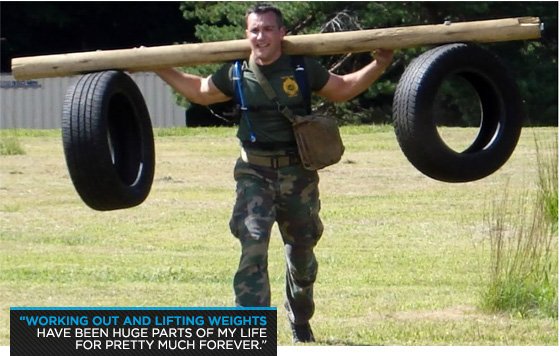
If only it stopped with the shoulder. I don't consider myself a runner, but I do include some of it in my training. I try to keep it interesting with trail runs or sprint-walks. But a couple of years, ago I started getting severe cramps in my left calf. The pain was bad enough that I had to stop running. I tried some acupuncture treatments and the cramps went away—momentarily. Not long after that, anytime I ran or got on a piece or cardio equipment I could feel my calf knot up again. I adjusted my workouts and decided I had to, once again, live with the pain.
Does any of this sound familiar? You've no doubt adjusted your workouts in the past to avoid a movement that had begun to feel painful or scary. Maybe you tried to stretch it away or grimaced while a masseuse crammed her elbow in your socket—all to no avail.
There must be a better way, right? I've come to believe that there is. It's called Active Release Technique, or ART.
My Road to The Table ///
Before you think I'm hawking some off-the-wall miracle cure, listen up. When it came to my shoulder, I gave the status quo its opportunity—and then some.
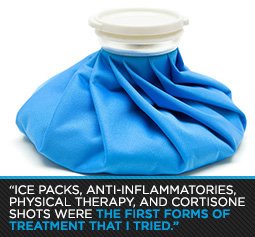 First, I went the normal route of treatments that included anti-inflammatories, ice packs, physical therapy, and cortisone shots. I had deep tissue massages, and while they seemed to help, they never seemed to go far enough, and the benefits never lasted.
First, I went the normal route of treatments that included anti-inflammatories, ice packs, physical therapy, and cortisone shots. I had deep tissue massages, and while they seemed to help, they never seemed to go far enough, and the benefits never lasted.
Eventually I didn't have the time or patience for more therapy, so it finally came down to surgery for "shoulder impingement syndrome." After this procedure, more cortisone shots, and more rounds of the previous treatments, I was back to heavy benching. Now at least I was smart enough to drop the behind-the-head militaries.
My shoulder was good enough to carry me through about 10 bench press contests in the following three years. Yet it was never quite right. My symptoms were starting to come back yet again. So when I was surfing around on the website of the noted strength coach Charles Poliquin and saw an article with the headline "Pain-Free Bench Pressing," you'd better believe I was going to read it. I wasn't looking to set new PRs; I just wanted to train without pain.
In the piece, Poliquin talks about how the great Serbian bodybuilder Milos Sarcev was scheduled for surgery on both shoulders for impingement syndrome. But after just one ART treatment, Sarcev was almost cured and he cancelled his surgery. This was hard to believe, but coming from a trainer of Poliquin's stature, I was willing to give him the benefit of the doubt. I'd have gladly settled for just half of Sarcev's purported results.
It had to be worth a shot. So I searched the ART website to find someone certified in my area and set up an appointment with Dr. Ken Lowey of Newton Center Chiropractic.
What Is ART? ///
ART is basically a super-deep tissue massage performed by a highly skilled, certified practitioner. It's based on the theory that, over time, scar tissue forms within muscles, fascia, and connective tissue due to overuse. These adhesions trap nerves, causing pain, weakness, and lack of mobility.
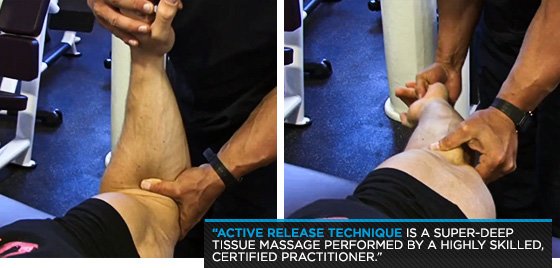
If you've ever had a truly deep massage, this logic probably makes sense to you in principle. Your muscles get shorter, weaker, and more sensitive, the more they're getting crowded by extraneous tissue and other crap. Acute injuries only make this situation worse. It's easy to think that when we're injured, we're injured for life. But ART practitioners are saying that with a little help, we can heal better, and more completely.
Unlike some equipment-heavy techniques like Graston, an ART provider uses nothing but their hands and know-how to locate scar tissue and manually break it up. Watch videos like the one below of Poliquin (who is a certified ART provider) performing ART on IFBB pro Ben Pakulski, and it looks like he just fishes around randomly in the muscle until he's hurting his patient. But according to the ART site, practitioners have to master over 500 different movements in order to get certified.
[h=2]Coach Poliquin Using ART to Maximize Muscle Growth[/h][h=4]Watch The Video - 07:38[/h]
Here Comes the Pain ///
On my first visit, I gave Dr. Lowey a summary of my injuries, focusing primarily on my right shoulder and left calf. He began searching my shoulder with his fingertips, and it didn't take him long to find the most painful spot.
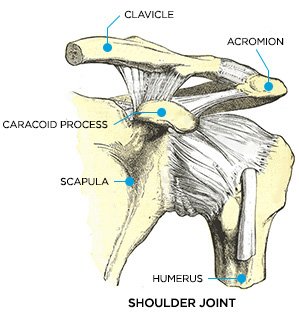 For the next several minutes, he manipulated my arm while his fingers and thumb dug deep into the front of my shoulder. It was agonizing—I'd say about an 8 on a 10-point scale.
For the next several minutes, he manipulated my arm while his fingers and thumb dug deep into the front of my shoulder. It was agonizing—I'd say about an 8 on a 10-point scale.
Then he began working on my calf, which for many people is the single most sensitive muscle group. He quipped that the scar tissue felt like a thick cable as he pressed deep along the length of this cable with his thumb.
He repeatedly inched his way toward my knee as if he was trying to press all the toothpaste out of a tube.
As for me, the pain just kept increasing until it topped off at a full 10. I was clenching my teeth so hard I'm surprised my molars didn't explode. I thought about tapping out, but I didn't want the loss on my record. I remembered reading that this treatment "could be painful" and I wasn't disappointed.
After one of the most grueling hours of my life, he finally said that was all he could do on the first session. I wasn't going to argue. He recommended I work out as usual and come back in a week.
The Aftermath ///
For the next several days, my shoulder and calf were sore to the touch. However, I was surprised to see that there wasn't any bruising. I bench pressed a couple of days after the session and I had very little pain—definitely less than I was feeling before the session. It wasn't pain-free, but my shoulder didn't feel as tight.
At my next treatment a week later, Dr. Lowey started off by working on my left calf again. Amazingly, it was almost painless. He said he got most of the scarring on the first session and there was very little left to break up. He also located and broke up a little scarring in my right calf. This time, I felt it.
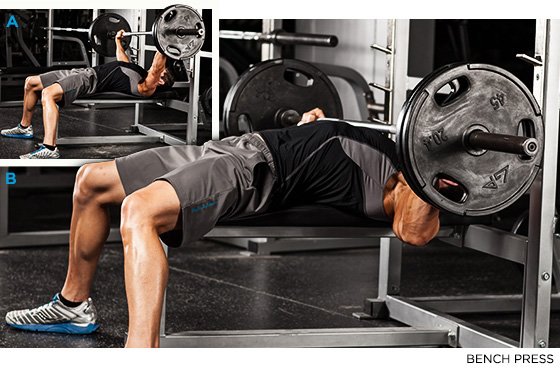
He worked on both shoulders, and while still painful, it wasn't nearly as bad as the first session. After another week and several workouts, my calf felt completely healed and pain free. The pain in my shoulder is less than half of what it was prior to treatment. I plan on going back for more treatments on both shoulders.
Had I not found this new treatment, I'm sure I would continue to tailor my workouts around my nagging injuries. The fact that the pain in my calf has disappeared after two sessions is amazing. Maybe after a few more treatments I'll know what it feels like to work out with pain-free shoulders and chest. I'm not sure I remember!
If your journey has been like mine, I recommend you consider ART along with the old traditional methods of treatment for nagging muscle and joint pain. Just try to get through the first session without giving up all your darkest family secrets and the PIN to your debit card.
Breaking Up With Scar Tissue: One Lifter’s Experience With A.R.T. By Jim Vaglica
Last updated: May 29, 2013 <meta content="2013-05-29" itemprop="dateModified"> <meta content="2013-03-05" itemprop="datePublished">
If you’ve ever adjusted your program around painful body parts, you’re definitely in the majority. Officer Jim Vaglica had tried it all, but backup finally arrived in the form of Active Release Technique.
<meta content="Bodybuilding.com" itemprop="name"> <meta content="1-866-236-8417" itemprop="telephone"> <meta content="http://www.bodybuilding.com" itemprop="url"> <meta content="http://www.bodybuilding.com/images/icons/bbcom-b-logo-648.png" itemprop="url"> <meta content="648" itemprop="width"> <meta content="648" itemprop="height"> <meta content="http://www.bodybuilding.com/images/icons/bbcom-b-logo-324.png" itemprop="contentUrl"> <meta content="324" itemprop="width"> <meta content="324" itemprop="height">
<meta content="5777 N. Meeker Ave." itemprop="streetAddress"> <meta content="Boise" itemprop="addressLocality"> <meta content="Idaho" itemprop="addressRegion"> <meta content="83713" itemprop="postalCode"> <meta content="USA" itemprop="addressCountry">
Working out and lifting weights have been huge parts of my life for pretty much forever, so I've had my fair share of aches and pains. One of my first major twinges first popped up about 15 years ago, back in the "How much do ya bench?" days. It was—this won't surprise many of you—in my shoulder.
The shoulder joint is the most mobile joint in the body, but that doesn't mean weightlifters have particularly mobile or healthy shoulders. On the contrary, this crucial joint is highly prone to injury. I attribute most of the damage to my practice of including heavy behind-the-head military presses in my program.
However, deep weighted dips and my beloved barbell bench didn't help my shoulders either. At one point, the pain was so bad I had to shampoo my head with just my left hand. I figured it was just part of the price I paid for the training I loved.

If only it stopped with the shoulder. I don't consider myself a runner, but I do include some of it in my training. I try to keep it interesting with trail runs or sprint-walks. But a couple of years, ago I started getting severe cramps in my left calf. The pain was bad enough that I had to stop running. I tried some acupuncture treatments and the cramps went away—momentarily. Not long after that, anytime I ran or got on a piece or cardio equipment I could feel my calf knot up again. I adjusted my workouts and decided I had to, once again, live with the pain.
Does any of this sound familiar? You've no doubt adjusted your workouts in the past to avoid a movement that had begun to feel painful or scary. Maybe you tried to stretch it away or grimaced while a masseuse crammed her elbow in your socket—all to no avail.
There must be a better way, right? I've come to believe that there is. It's called Active Release Technique, or ART.
My Road to The Table ///
Before you think I'm hawking some off-the-wall miracle cure, listen up. When it came to my shoulder, I gave the status quo its opportunity—and then some.

Eventually I didn't have the time or patience for more therapy, so it finally came down to surgery for "shoulder impingement syndrome." After this procedure, more cortisone shots, and more rounds of the previous treatments, I was back to heavy benching. Now at least I was smart enough to drop the behind-the-head militaries.
My shoulder was good enough to carry me through about 10 bench press contests in the following three years. Yet it was never quite right. My symptoms were starting to come back yet again. So when I was surfing around on the website of the noted strength coach Charles Poliquin and saw an article with the headline "Pain-Free Bench Pressing," you'd better believe I was going to read it. I wasn't looking to set new PRs; I just wanted to train without pain.
In the piece, Poliquin talks about how the great Serbian bodybuilder Milos Sarcev was scheduled for surgery on both shoulders for impingement syndrome. But after just one ART treatment, Sarcev was almost cured and he cancelled his surgery. This was hard to believe, but coming from a trainer of Poliquin's stature, I was willing to give him the benefit of the doubt. I'd have gladly settled for just half of Sarcev's purported results.
It had to be worth a shot. So I searched the ART website to find someone certified in my area and set up an appointment with Dr. Ken Lowey of Newton Center Chiropractic.
What Is ART? ///
ART is basically a super-deep tissue massage performed by a highly skilled, certified practitioner. It's based on the theory that, over time, scar tissue forms within muscles, fascia, and connective tissue due to overuse. These adhesions trap nerves, causing pain, weakness, and lack of mobility.

If you've ever had a truly deep massage, this logic probably makes sense to you in principle. Your muscles get shorter, weaker, and more sensitive, the more they're getting crowded by extraneous tissue and other crap. Acute injuries only make this situation worse. It's easy to think that when we're injured, we're injured for life. But ART practitioners are saying that with a little help, we can heal better, and more completely.
Unlike some equipment-heavy techniques like Graston, an ART provider uses nothing but their hands and know-how to locate scar tissue and manually break it up. Watch videos like the one below of Poliquin (who is a certified ART provider) performing ART on IFBB pro Ben Pakulski, and it looks like he just fishes around randomly in the muscle until he's hurting his patient. But according to the ART site, practitioners have to master over 500 different movements in order to get certified.
[h=2]Coach Poliquin Using ART to Maximize Muscle Growth[/h][h=4]Watch The Video - 07:38[/h]
<iframe width="560" height="315" src="http://www.youtube.com/embed/y2xXYlVzel8" frameBorder="0" allowfullscreen=""></iframe>
Here Comes the Pain ///
On my first visit, I gave Dr. Lowey a summary of my injuries, focusing primarily on my right shoulder and left calf. He began searching my shoulder with his fingertips, and it didn't take him long to find the most painful spot.

Then he began working on my calf, which for many people is the single most sensitive muscle group. He quipped that the scar tissue felt like a thick cable as he pressed deep along the length of this cable with his thumb.
He repeatedly inched his way toward my knee as if he was trying to press all the toothpaste out of a tube.
As for me, the pain just kept increasing until it topped off at a full 10. I was clenching my teeth so hard I'm surprised my molars didn't explode. I thought about tapping out, but I didn't want the loss on my record. I remembered reading that this treatment "could be painful" and I wasn't disappointed.
After one of the most grueling hours of my life, he finally said that was all he could do on the first session. I wasn't going to argue. He recommended I work out as usual and come back in a week.
The Aftermath ///
For the next several days, my shoulder and calf were sore to the touch. However, I was surprised to see that there wasn't any bruising. I bench pressed a couple of days after the session and I had very little pain—definitely less than I was feeling before the session. It wasn't pain-free, but my shoulder didn't feel as tight.
At my next treatment a week later, Dr. Lowey started off by working on my left calf again. Amazingly, it was almost painless. He said he got most of the scarring on the first session and there was very little left to break up. He also located and broke up a little scarring in my right calf. This time, I felt it.

He worked on both shoulders, and while still painful, it wasn't nearly as bad as the first session. After another week and several workouts, my calf felt completely healed and pain free. The pain in my shoulder is less than half of what it was prior to treatment. I plan on going back for more treatments on both shoulders.
Had I not found this new treatment, I'm sure I would continue to tailor my workouts around my nagging injuries. The fact that the pain in my calf has disappeared after two sessions is amazing. Maybe after a few more treatments I'll know what it feels like to work out with pain-free shoulders and chest. I'm not sure I remember!
If your journey has been like mine, I recommend you consider ART along with the old traditional methods of treatment for nagging muscle and joint pain. Just try to get through the first session without giving up all your darkest family secrets and the PIN to your debit card.
first blood
MuscleChemistry Member
You can slow the process tho! Rotate injection sights , with some oils the product is so thin you can actually use a slin pin, start with 1 inch needles then years later move to 1 1,2 inch to go past scar tissue..
Muscle mechanic
MuscleChemistry Registered Member
I do from glutes across all the way to hip injection. I make an imaginary line about 3" from glute injection on both sides and I can keep going all the way to hip injection spot. I don't have much body fat I use 1". When I am on a blast I get some hard knots but as soon as I get myself a break they clear once on trt dose twice week. I also hit outer legs and under shoulder at top of triceps. I have big triceps meaty muscle when relaxed. A break at the spot always helps. Hip is my favorite spot
trekrider215
New member
Thanks for the article drtbear. Never knew about that technique
trekrider215
New member
Sar tissues a bitch. I dont really pin delts anymore because i cant. I used to to pin them everyday now my shoulders are fucked up. Theres like a 3 inch area in the middle of my left delt where the skin on the surface is completely numb. No sensation at all. Yet if i were to try and pin through it, ir would get extremely painful. I have a spot like that on my quad too. Must have fucked some nerves up or something.. idk. Anyone else get that? Honestlt just think its a buildup of scar tissue.
Muscle mechanic
MuscleChemistry Registered Member
I pin glutes and hip most. The more meat the less scar tissue builds. I have the hard ares that are hard to go thru but they under surface. Unless u doing exactly same spot thru skin and all this shouldn't happen. Iv drug attics get this at surface from shooting exactly same spot on vein.
What I am saying is rotate give area a break the hard stuff goes away after a while. Most of it is from depot area in muscle that makes a knot it's actually under surface. If u try to pin your shin it won't go hardly thru skin cause of bony area. Same with depot area hard.
Rotate let depot rest. I put needle against and turn it back and forth like a drill till it sinks pulling skin tight with other hand. This helps not create tissue. Stop dabbing bad technique
- - - Updated - - -
Wanna add I been doing gear for 20 years and I have done alot. I do less than ever but still alot
What I am saying is rotate give area a break the hard stuff goes away after a while. Most of it is from depot area in muscle that makes a knot it's actually under surface. If u try to pin your shin it won't go hardly thru skin cause of bony area. Same with depot area hard.
Rotate let depot rest. I put needle against and turn it back and forth like a drill till it sinks pulling skin tight with other hand. This helps not create tissue. Stop dabbing bad technique
- - - Updated - - -
Wanna add I been doing gear for 20 years and I have done alot. I do less than ever but still alot
The Dude
MuscleChemistry Registered Member
I've got massive amounts of scar tissue in the front of my quads from injections. I literally makes me nauseous when I rub on them.. both feel like I have 2 or 3 golf balls just under the skin... disgusting. My old PCP said surgery was the only option... but I would then likely develop scar tissue from the surgery not to mention massive scarring... the only thing I've found to help lessen it's development is liberal use of DMSO on areas prone to scar tissue... and lots of painful massage...
The Dude
MuscleChemistry Registered Member
damn, I don't now many guys with a lot of scar tissue in quads, now the ass on the other hand is a different story, lol, one included lol,
It's pretty gross... I'm not self conscious about much... at our age we are just way past that... but I'm very self conscious and bothered by it... I normally try not to even touch that area... it's pretty sick... like two golf balls surgically implanted next to each other just under the skin
drtbear1967
Musclechemistry Board Certified Member
Dude, are they painful to the touch? I know you use dmso but have you ever had deep tissue massage on them. I know that would be painful, but it might help break some of the tissue up.
I've found that my delts and glutes have the least amount of scar. Built some scar tissue up in my arms and quads, enough to have an airport scanner flag me because it registers as denser than normal tissue. Literally stopped all activity in one area of the LA airport while they did a pat down to make sure I was okay. TSA agent was like, "Dude, your arms are huge and solid!"
MightyJohn
New member
ART, deep tissue massage, ultrasound machines and serrapeptase enzymes
I was going to say I've heard ultra sound machines are good for breaking some up.
Sent from my SM-G930V using Tapatalk
Sent from my SM-G930V using Tapatalk
When I pinn my right glute it squeaks like a cork coming out of a bottle
lmao, Bro NOT many people would know EXACTLY what your talking about with the Squeeking when injecting into scar tissue lmao, But UNFORTUNATELY I know exactly what you mean, and I know that squeaking sounds lol, damn good call on how it sounds!



